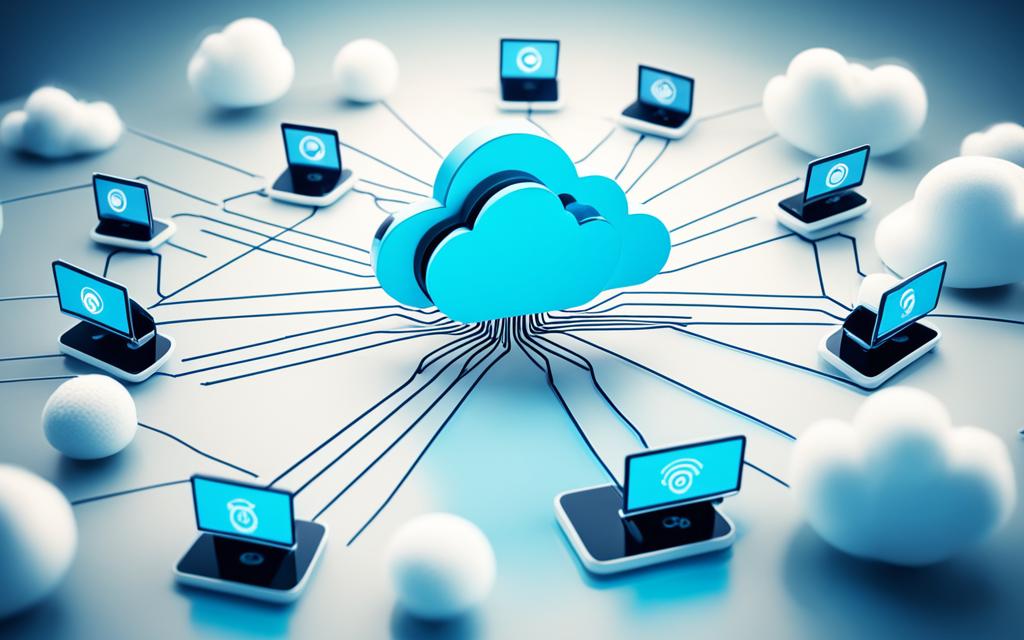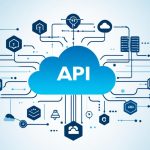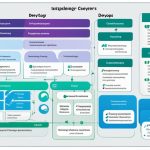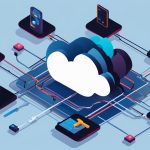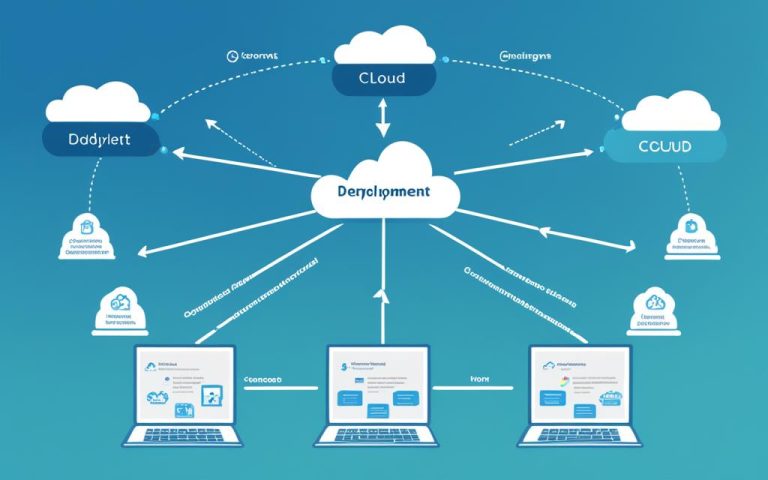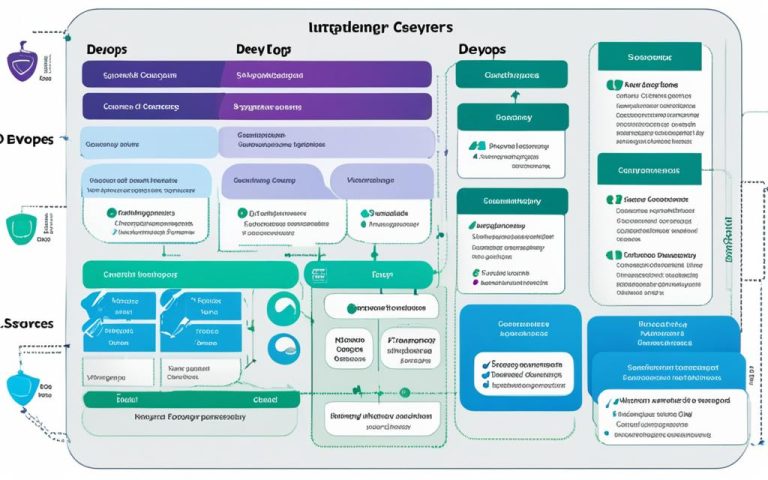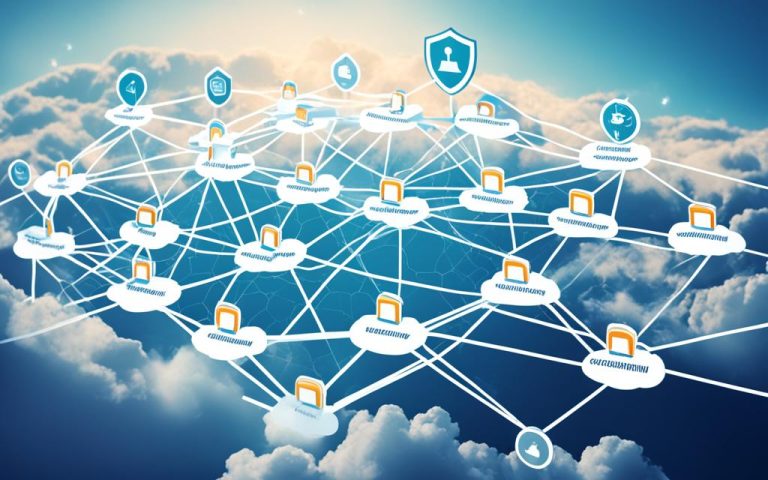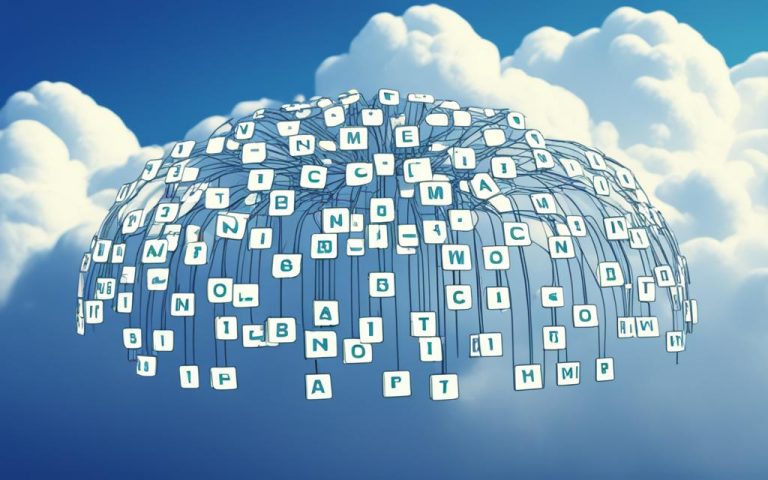IoT devices have revolutionized the way we live and work by connecting physical devices to cloud networks. Their ability to gather and transmit data has led to automation, remote monitoring, and control in various industries. To ensure optimal performance and network security, managing IoT devices is crucial. This requires specialized tools and techniques for effective Cloud IoT management and IoT device management in cloud networks.
Cloud IoT management involves managing and optimizing the deployment, configuration, and monitoring of IoT devices in cloud networks. It encompasses various tasks such as device registration, authentication, troubleshooting, and firmware updates. Specialized tools provide administrators with centralized control and remote access to connected devices, ensuring efficient management and maintenance.
IoT device management is the process of overseeing the lifecycle of IoT devices, from provisioning to retirement. This includes device registration, configuration, monitoring, and updating. With the help of specialized tools, administrators can streamline these processes, ensuring seamless connectivity, scalability, and security.
In this article, we will explore the importance of managing IoT devices in cloud networks and how specialized tools can facilitate efficient Cloud IoT management and IoT device management. We will delve into the key components of effective IoT device management, such as centralized management software, secure connectivity, data protection, and integration capabilities. Additionally, we will discuss the significance of security and data protection in IoT device management, as well as the benefits of remote device monitoring and control.
By understanding the complexities of managing IoT devices in cloud networks and utilizing specialized tools, businesses can optimize efficiency, enhance security, and ensure scalability in their IoT ecosystems. Stay tuned as we delve deeper into the world of Cloud IoT management and IoT device management.
What is IoT Device Management?
In the world of IoT, managing devices is crucial for ensuring optimal performance and maintaining network security. This is where IoT device management comes into play. It encompasses a range of tasks, including device registration, configuration, troubleshooting, and firmware updates.
IoT device management tools provide administrators with the ability to centrally manage and control a network of connected devices. With these tools, administrators can remotely troubleshoot issues, update firmware, and even reboot devices if necessary. This level of control and accessibility streamlines the management process, saving time and resources.
Major cloud vendors, such as Google Cloud IoT, IBM, and AWS IoT, offer comprehensive IoT device management services. These services provide a robust infrastructure for managing IoT devices, ensuring seamless connectivity and effective communication within the network.
“IoT device management is the backbone of IoT infrastructure. It enables administrators to efficiently register, configure, and troubleshoot devices, ultimately optimizing performance and minimizing downtime.”
IoT device management involves various essential tasks:
- Device Registration: This process involves onboarding new devices to the network, granting them appropriate permissions and access rights.
- Configuration: IoT device management allows administrators to configure and customize device settings according to specific requirements.
- Troubleshooting: With IoT device management tools, administrators can diagnose and resolve issues remotely, saving time and resources.
- Firmware Updates: Keeping devices up-to-date with the latest firmware versions is crucial for optimal performance and security. IoT device management enables seamless firmware updates across the network.
Overall, IoT device management plays a critical role in ensuring the smooth operation of IoT networks. By streamlining device registration, configuration, troubleshooting, and firmware updates, administrators can effectively manage and maintain their IoT ecosystem.
Understanding IoT Device Management
IoT device management plays a crucial role in monitoring, maintaining, and controlling networked devices in IoT environments. It ensures the security, efficiency, and scalability of IoT systems. Effective IoT device management is achieved through centralized management software, secure connectivity, data protection measures, and integration capabilities. This comprehensive approach covers the entire lifecycle of IoT devices, from provisioning and monitoring to updating and retiring.
One of the essential aspects of IoT device management is centralized management software. This software provides a centralized platform for managing and monitoring a network of IoT devices. It allows administrators to efficiently handle device configurations, software updates, and troubleshooting tasks. With centralized management software, administrators can easily scale their IoT deployments and ensure optimal device performance.
Security is another critical factor in IoT device management. As IoT devices connect to networks and transmit sensitive data, robust security measures must be in place. Secure connectivity safeguards data transmission between devices and the management platform. It includes authentication protocols, encryption, and the use of secure communication protocols. By implementing strong security measures, organizations can prevent unauthorized access to their IoT devices and ensure the integrity and privacy of data.
Scalability is also an important consideration in IoT device management. As the number of connected devices grows, the management system must be able to handle increasing device deployments. A scalable IoT device management solution effectively manages and monitors a large number of devices without sacrificing performance and efficiency.
Integration capabilities are essential for seamless communication between IoT devices and external applications or systems. Integration allows for efficient data collection, analysis, and utilization. With integration capabilities, organizations can leverage data from IoT devices to enhance business processes, optimize operations, and gain valuable insights.
Top IoT Device Management Solutions in 2023
Several leading IoT device management solutions are available in the market. These solutions offer comprehensive features and functionalities to meet the diverse needs of organizations. Some of the top IoT device management solutions in 2023 include:
- Huawei Cloud’s IoT Device Management
- IBM Watson IoT Platform
- Azure IoT Hub
These platforms provide robust capabilities for managing and monitoring IoT devices, ensuring security, scalability, and efficiency.
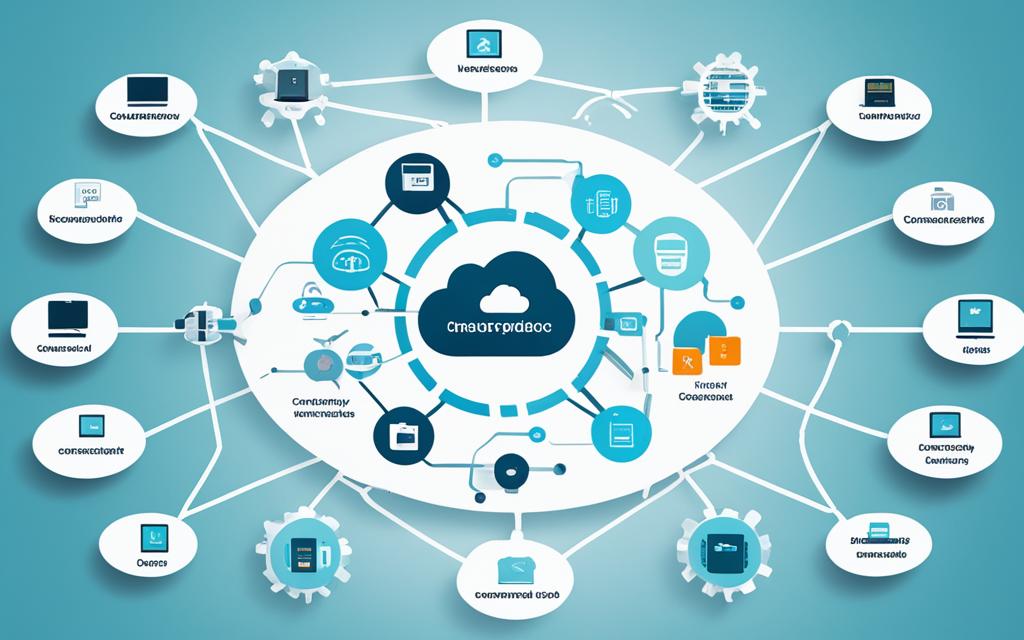
“IoT device management is crucial for ensuring the security, efficiency, and scalability of networked devices in IoT environments. With centralized management software, secure connectivity, data protection, and integration capabilities, organizations can effectively manage and monitor their IoT devices throughout their lifecycle.”
By understanding the importance of IoT device management and leveraging the right solutions, organizations can unlock the full potential of their IoT deployments and drive innovation and growth.
Key Components of Effective IoT Device Management
Effective IoT device management is crucial for optimizing the performance and security of IoT devices. To ensure seamless operations and efficient control, several key components need to be in place:
1. Centralized Management Software
To achieve scalability and efficiency in IoT device management, a centralized management software solution is essential. This software enables administrators to monitor and control a network of interconnected devices from a single, unified platform. By centralizing management tasks such as device registration, configuration, and monitoring, organizations can streamline operations and reduce the complexity of managing large-scale IoT deployments.
2. Secure Connectivity
Secure connectivity is a critical component of effective IoT device management. It ensures the protection of data transmitted between devices and the management platform, safeguarding against potential security breaches and unauthorized access. Implementing robust security measures such as authentication protocols, encryption techniques, and secure communication protocols guarantees the confidentiality and integrity of sensitive data.
3. Data Protection
Data protection is paramount in IoT device management. It involves implementing measures to ensure the integrity, confidentiality, and privacy of data collected and transmitted by IoT devices. Encryption techniques and secure storage solutions can protect data from unauthorized access and ensure compliance with data protection regulations. By prioritizing data protection, organizations can build trust with customers and stakeholders while mitigating the risks associated with data breaches.
4. Integration Capabilities
Integration capabilities play a crucial role in optimizing IoT device management. The ability to integrate with external applications and platforms enables seamless data collection, analysis, and visualization, enhancing operational efficiency and scalability. By leveraging integration capabilities, organizations can unlock the full potential of IoT devices and maximize the value of the data they generate.
“Effective IoT device management requires centralized management software, secure connectivity, data protection, and integration capabilities to optimize performance and security.”
To summarize, the key components of effective IoT device management include centralized management software, secure connectivity, data protection, and integration capabilities. By implementing these components, organizations can ensure seamless operations, enhanced security, and efficient control over their IoT devices.
| Component | Description |
|---|---|
| Centralized Management Software | Enables administrators to monitor and control a network of devices from a unified platform. |
| Secure Connectivity | Protects data transmission between devices and the management platform. |
| Data Protection | Safeguards the integrity, confidentiality, and privacy of data collected by IoT devices. |
| Integration Capabilities | Facilitates seamless data collection, analysis, and visualization through integration with external applications. |
Ensuring Security and Data Protection in IoT Device Management
When it comes to IoT device management, security and data protection are of utmost importance. With the increasing number of devices connected to networks, it is crucial to establish secure device connectivity and ensure the privacy and compliance of data.
Secure device connectivity involves implementing authentication, encryption, and secure protocols to safeguard data transmission. By verifying the identity of devices and encrypting the data they transmit, organizations can prevent unauthorized access and maintain the integrity of sensitive information.
Data privacy and compliance go hand in hand with IoT device management. Adhering to industry regulations and best practices ensures that personal and sensitive data is treated with strict confidentiality. This includes implementing proper data protection measures, obtaining user consent for data collection, and providing transparent privacy policies.
Implementing strong authentication protocols is crucial for IoT device management security. By employing multi-factor authentication, organizations can ensure that only authorized users have access to the devices and their data. Additionally, continuous monitoring of security protocols helps identify potential vulnerabilities and prevent security breaches.
Data encryption and monitoring security protocols play a crucial role in ensuring the security and privacy of IoT device data.
To illustrate the significance of security and data protection in IoT device management, consider the following example:
| Security Measure | Importance |
|---|---|
| Authentication | Prevents unauthorized access to devices and data. |
| Data Encryption | Protects data during transmission, ensuring confidentiality. |
| Monitoring Security Protocols | Detects and addresses potential vulnerabilities, ensuring continuous protection. |
Securing IoT device management is essential for maintaining the trust of customers and stakeholders. By prioritizing security and data protection, organizations can mitigate risks and safeguard valuable information.
In the next section, we will explore the benefits of enhancing remote device monitoring and control in IoT device management.
Enhancing Remote Device Monitoring and Control
Remote device monitoring and control play a critical role in effective IoT device management. With real-time data visualization, users can monitor device performance, detect anomalies, and make informed decisions based on live data. This feature empowers businesses to proactively address issues, optimize device performance, and enhance overall operational efficiency.
Predictive analytics is another valuable capability that enhances remote device monitoring and control. By leveraging advanced algorithms and machine learning, predictive analytics can identify potential issues before they occur. This proactive approach allows organizations to implement preventive maintenance measures, reduce downtime, and optimize device performance.
By combining real-time data visualization and predictive analytics, businesses can unlock valuable insights and take timely actions. The ability to monitor devices remotely in real-time enables immediate response to any performance fluctuations or abnormalities. This level of control allows organizations to ensure optimal device functionality, reduce operational costs, and deliver a superior user experience.
The Benefits of Enhancing Remote Device Monitoring and Control:
- Real-time visibility into device performance
- Early detection and mitigation of anomalies
- Proactive maintenance to optimize device performance
- Reduced downtime and improved operational efficiency
- Enhanced decision-making based on live data insights
- Cost savings through optimized device management
By harnessing the power of remote device monitoring, real-time data visualization, and predictive analytics, organizations can revolutionize their IoT device management practices. This advanced approach allows businesses to stay ahead of potential issues, provide seamless user experiences, and maximize the value derived from their IoT investments.
| Features | Remote Device Monitoring | Real-Time Data Visualization | Predictive Analytics |
|---|---|---|---|
| Definition | Monitoring devices from a remote location | Real-time visualization of device performance data | Identifying potential issues based on data patterns and trends |
| Benefits | – Improved operational efficiency – Enhanced decision-making – Immediate response to issues |
– Real-time insights – Anomaly detection – Data-driven decision-making |
– Proactive maintenance – Downtime reduction – Optimized device performance |
| Implementation | – Cloud-based monitoring tools – Secure remote access |
– Data visualization dashboards – Real-time reporting |
– Advanced analytics algorithms – Machine learning models |
Conclusion
Managing IoT devices in cloud networks with specialized tools is crucial for optimizing efficiency, security, and scalability. Effective IoT device management encompasses the entire lifecycle of devices, including provisioning, configuration, monitoring, and updating. By prioritizing security and data protection, businesses can mitigate risks and safeguard sensitive information.
IoT device management platforms provide the necessary capabilities for remote device monitoring and control, empowering users to make informed decisions based on real-time data. Additionally, predictive analytics helps identify potential issues proactively, enabling predictive maintenance and optimizing device performance.
Cloud IoT management plays a critical role in maintaining a robust and secure IoT ecosystem. With the right tools and practices in place, businesses can streamline their operations, enhance efficiency, and ensure the scalability of their IoT deployments. By leveraging cloud-based solutions for IoT device management, organizations can harness the power of the cloud to drive innovation and achieve their business goals.
FAQ
What is IoT device management?
IoT device management is the process of registering, configuring, troubleshooting, and maintaining IoT devices throughout their lifecycle. It involves tasks such as device registration, authentication, firmware updates, and monitoring.
Why is IoT device management important?
IoT device management is essential for monitoring, maintaining, and controlling networked devices. It ensures security, efficiency, and scalability in IoT environments.
What are the key components of effective IoT device management?
Effective IoT device management involves centralized management software, secure connectivity, data protection, and integration capabilities. These components are crucial for optimizing IoT device management.
How can security and data protection be ensured in IoT device management?
Security and data protection are paramount in IoT device management. Secure device connectivity involves authentication, encryption, and secure protocols to protect data transmission. Data privacy and compliance require adherence to industry regulations and best practices.
What are the features of remote device monitoring and control in IoT device management?
Remote device monitoring and control allow users to monitor device performance in real-time, detect anomalies, and make informed decisions based on live data. Predictive analytics helps identify potential issues and optimize device performance through proactive maintenance.
How does IoT device management enhance the efficiency of cloud networks?
Managing IoT devices in cloud networks with specialized tools is essential for optimizing efficiency, security, and scalability. Effective IoT device management ensures the proper provisioning, configuration, monitoring, and updating of devices.

